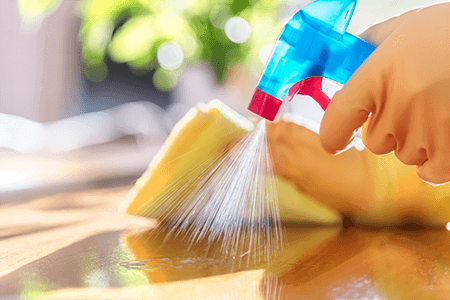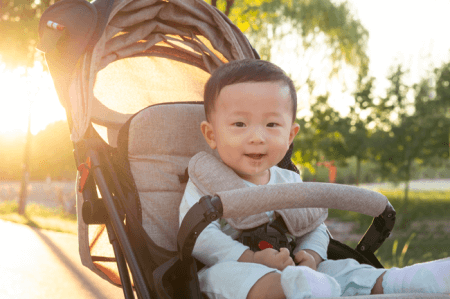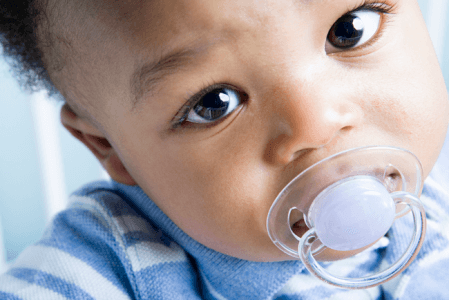How to Clean and Disinfect Toys Safely
To kids, toys are among their most valuable possessions. Depending on their age, playing with toys can involve licking them, sleeping with them, throwing them, hugging them, chewing on them, and who knows what else. To parents, toys are germ-infested household items that are necessary evils for peace and quiet around the house. In addition to bacteria and viruses, toys can harbor allergens or mold, along with dirt and grime (especially if you take them outside of the house).
So the question isn’t whether or not you should clean toys… it’s how to clean them effectively and how often to do it. In this article, we go over all the different types of toys and how best to clean them safely and effectively. This not only helps keep your family healthy, but also keeps the toys looking and working their best.
What’s the best way to clean toys?
It depends on the type of toy. Children’s toys can be made of all sorts of materials -- from plastic to wood to soft fabrics. And if they’re electronic, that’s an added complication when it comes to cleaning. Below, we’ll run down the best ways to clean each type of toy.
How to clean plastic toys
Solid plastic toys are the easiest to clean and disinfect. Nonporous toys like animal figures and building blocks can be cleaned in the following ways:
-
Disinfecting wipes: First wash or wipe off any visible dirt and grime from the toys, then use disinfectant wipes to clean and disinfect each piece. Make sure to follow the contact time on the label for effective disinfecting. For example, Nice 'N CLEAN® Disinfecting Wipes have a 3-minute contact time for killing bacteria** and viruses*. That means the surface must remain wet for at least 3 minutes. If the toy is something your child might put in their mouth, rinse it off with potable water after it air dries.
-
Dishwasher top rack: You can wash solid plastic toys in the top rack of the dishwasher. For small toys, place them in a mesh bag so they don’t get sprayed off the top rack during the washing process. Larger toys can be nestled securely between the tines in the rack. Select the normal or sanitizing cycle, and air dry or towel dry any toys that don’t come out thoroughly dried.
-
Bleach solution: Another way to clean and disinfect plastic toys is to mix a half cup of chlorine bleach and one gallon of water, then soak the toys in there for at least 5 minutes. Allow to air dry thoroughly. Rinse with potable water and then air dry again to ensure all of the bleaching solution is gone.
How to clean bath toys
Most bath toys are made of solid plastic so can be washed in the same way as plastic toys (listed above). You may think bath toys don’t need to be cleaned since they’re played with in soapy water, but that’s not true. The primary issue with bath toys is that they are left in the tub or stored in a way that doesn’t allow them to completely air dry between baths. This can create an environment that allows mold to grow.
Bath toys with holes in the bottom are especially concerning because water can get trapped inside. Mold can grow inside a bath toy without your knowledge. In general, bath toys with holes should be avoided, but if you have any, make sure to shake them or squeeze them vigorously after each use to get out as much water as possible. Store them in an area that allows them to air dry between baths. Try to peek inside if you can to see if there’s any mold growing. If you see any signs of mold growth or moldy water comes out when you squeeze it, throw the toy away.
How to clean plush toys
Plush toys like stuffed animals get a lot of love. They’re often sleeping companions, playtime companions, and field trip companions, just to name a few of their important roles. The first thing to do is to check the care label to see how the manufacturer recommends cleaning it. If there’s no care label attached, check the toymaker’s website for guidance.
Washable plush toys
For washable plush toys, always do a colorfast test prior to putting it in the washing machine. Add a drop of water and blot it with a paper towel. If the color bleeds, then don’t put it in the washing machine. Once you’re sure the toy is colorfast and washable, get it ready for the washing machine by placing it in a large laundry mesh bag to protect it. If you don’t have a laundry mesh bag, a pillowcase will also work -- just knot the top. This is especially helpful if the plush toy has any decorations or buttons.
Wash on the gentle cycle and select the “slow spin” option. For the dryer, select the low-heat setting (keep the toy in the mesh bag for the dryer). You can also use the hair dryer if you want an even more gentle drying option.
Note: Make sure the plush toy doesn’t contain any metal parts, built-in battery packs, or noise makers of any kind. If it does, water will permanently damage the toy.
Non-washable plush toys
Some plush toys can only be spot cleaned or hand washed. Here’s how to do it:
-
Mix a bowl of warm water and hand soap (or dish soap).
-
Dip a washcloth or sponge into the soapy solution and clean the entire toy.
-
Follow up with a damp washcloth that’s only wet with water (no soap).
-
Allow the toy to air dry completely or blow dry with a hair dryer.
Another option is to use a garment steamer. The heat from the steam can help kill bacteria, dust mites, and other allergens. Afterwards, use your vacuum’s upholstery attachment to remove any leftover dirt and dust.
How to clean electronic toys
First, check to see if the manufacturer has any cleaning guidelines in the toy manual or on their website. In general, electronic toys can only be surface cleaned. Always start by turning the toy off, unplugging it, and removing any batteries (be sure to replace the battery cover after removing the batteries).
-
Wipe off any dirty and sticky spots with a damp paper towel or cloth.
-
Go over it again with a disinfectant wipe like Nice 'N CLEAN® Disinfecting Wipes. Allow the surface to remain wet for the contact time listed on the instruction label, then air dry completely.
-
Wet a clean cloth with only water and wring it out. Use the damp cloth to wipe the electronic toy a third time and let it air dry again before using.
How to clean wooden toys
Again, it’s always a good idea to first check the manufacturer’s care instructions for each specific toy. If you don’t have them, keep these cleaning tips in mind for wooden toys:
-
Never soak or immerse wooden toys in water. Wood is porous so soaking may cause the toy to swell and change shape.
-
Wood has natural antibacterial qualities so is not as susceptible to germs as plastic toys are. Make a solution of mild dish soap or vinegar diluted with water and use a clean cloth or sponge to gently wipe the wooden toy. Allow to air dry completely.
How to clean outdoor toys
Plastic gym sets, play houses, sandbox toys, picnic tables, and other nonporous items can be washed with hot soapy water then rinsed off with a garden hose and left to air dry. You can also wipe them down with disinfecting wipes. Make sure to wipe away or wash off the visible dirt and grime before using disinfectant wipes.
How to clean books
Yes, we are aware that books are technically not toys, but we included them because they’re frequently touched and handled by kids, and favorite ones can get dirty and sticky over time. Keep these cleaning tips in mind depending on the type of book you’re cleaning:
-
Board books can be cleaned by wiping down each page with a disinfecting wipe or a cloth that is damp from soapy water. Let each page air dry, or dry with a clean paper towel.
-
Hardcover books can be wiped down in the front and back only.
-
Paper books cannot be cleaned. If you’re concerned about bacteria or viruses, place them in quarantine for two weeks before reading again.
How often should I clean toys?
There’s no rule on how often you should clean toys -- it really depends on how often your child plays with them and where they are used. For example, a toy that gets taken to the park regularly will need more cleaning than a toy that’s always at home. A toy that your child sleeps with will need more washing than a toy that your child plays with once a week.
Here are some general guidelines to follow:
-
Plastic toys and bath toys that are played with daily should be washed at least once a week. Baby toys that are chewed on or dropped on the floor should be washed daily or every other day.
-
Washable plush toys should be tossed into the washing machine once a week if they’re played with daily (or slept with). Non-washable plush toys should be spot cleaned as needed.
-
Electronic toys should get a weekly wipe down.
-
Outside of the above guidelines, toys should be cleaned daily whenever your child is sick, when they’re noticeably dirty (e.g., food is spilled on it), and immediately after a playdate where other children have played with your toys, especially if the children put the toys in their mouths or put their hands in their mouths while playing.
Toys are a wonderful way to educate and entertain children, but they can also be vessels for spreading germs. By regularly cleaning them, you’ll help minimize the chances of sickness while keeping your child’s favorite toys in top playing condition!
The next time you make a trip to Costco, be sure to pick up some Nice ’N CLEAN® Disinfecting Wipes! They’re available in Fresh Scent and Lemon Scent (with scrubby texture).
_______





